How To Make Chalk Paint: 5 Simple DIY Recipes
Chalk paint has surged in popularity among DIY enthusiasts and home decorators alike. This fun paint is prized for its velvety matte finish and remarkable versatility. Unlike traditional paint, chalk paint adheres to almost any surface without the need for painstaking prep work. This makes it a go-to choice for reviving old furniture or crafting unique home accents. While there are plenty of store-bought options, creating your own chalk paint is worth it. Not only will it save you money, but it will also open up a world of customization. From adjusting the thickness to perfecting the hue, homemade chalk […]
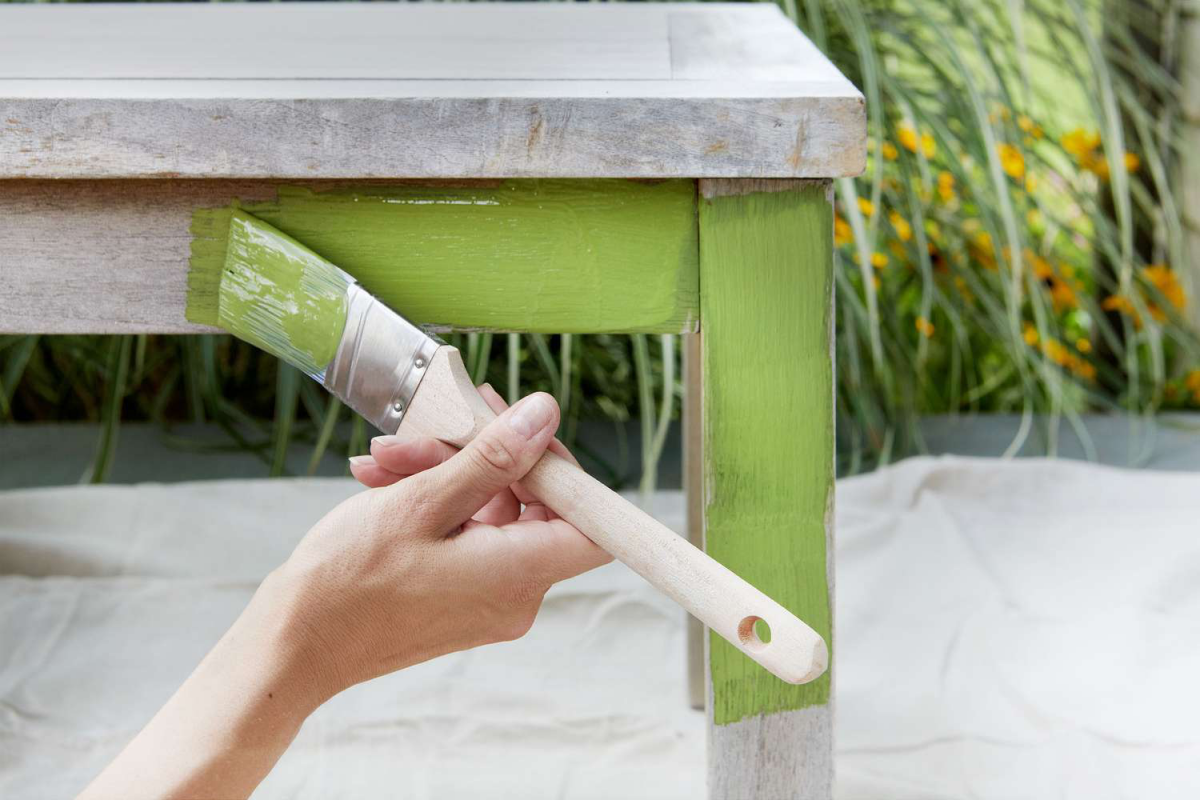
Chalk paint has surged in popularity among DIY enthusiasts and home decorators alike. This fun paint is prized for its velvety matte finish and remarkable versatility. Unlike traditional paint, chalk paint adheres to almost any surface without the need for painstaking prep work. This makes it a go-to choice for reviving old furniture or crafting unique home accents. While there are plenty of store-bought options, creating your own chalk paint is worth it. Not only will it save you money, but it will also open up a world of customization. From adjusting the thickness to perfecting the hue, homemade chalk paint puts creative control firmly in your hands. That’s why today we will show you how to make chalk paint a few different ways.
Chalk paint adheres to almost any surface without the need for prep work

@The Spruce
How To Make Chalk Paint
The appeal of creating your own chalk paint extends beyond the savings. It’s about the pleasure found in personalizing your projects. DIY chalk paint allows for unparalleled customization. It enables you to achieve the exact shade or texture you desire, far beyond what premade options offer. This guide introduces a couple of easy-to-follow recipes, each designed to bring a unique touch to your creations. From achieving the perfect color match to exploring varied finishes, these recipes are your gateway to adding distinct character and style to your work. This paint will ensure that each piece is a reflection of your individuality and creativity.
DIY chalk paint allows for unparalleled customization
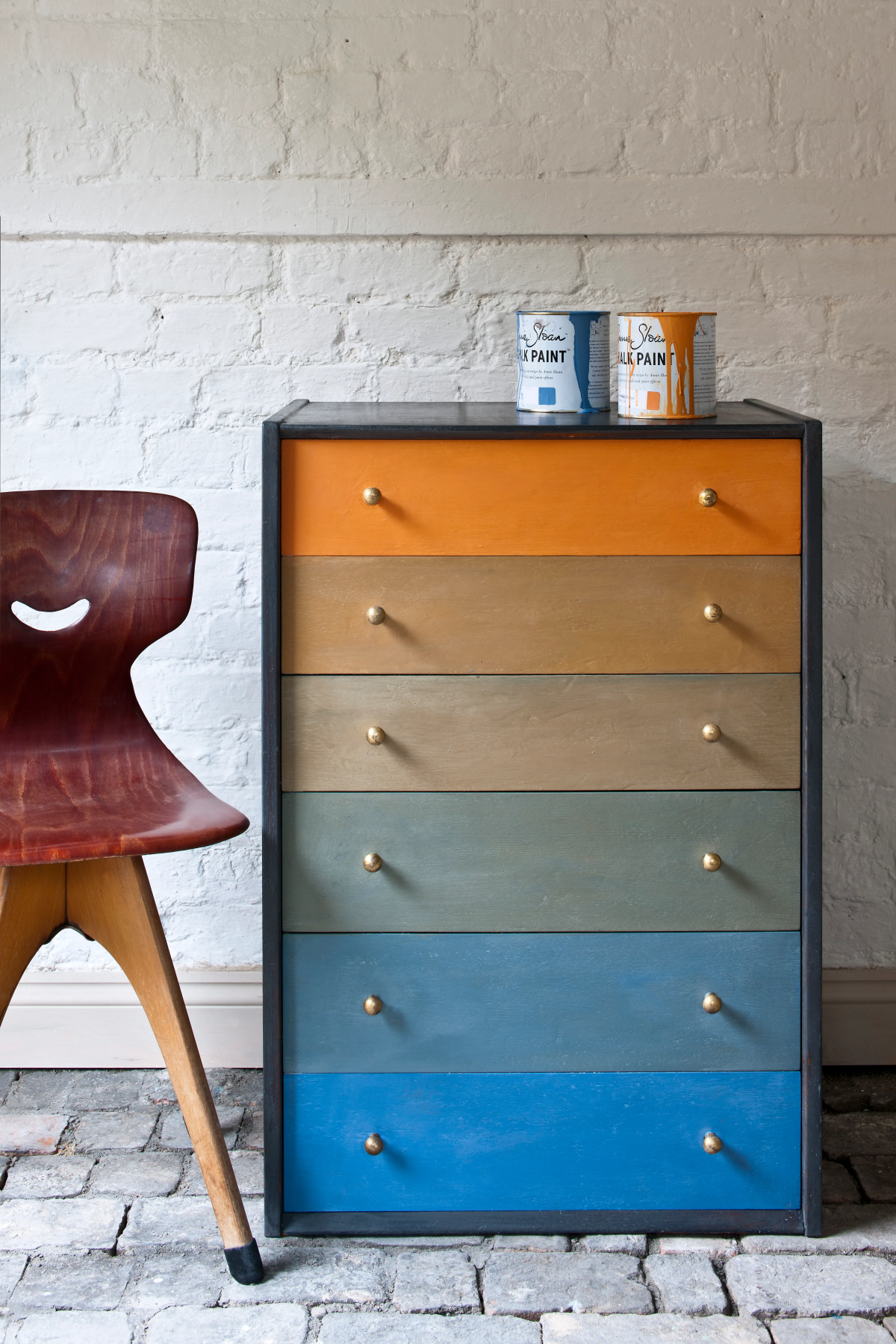
Basic chalk paint
This is a super simple, classic recipe for chalk paint. It only has three ingredients and takes a couple of minutes to make. Basic chalk paint is best used for modern furniture makeovers that are in need of a silky-smooth finish.
Ingredients:
- 1 part Calcium Carbonate Powder
- 1 part Water
- 2 parts Latex Paint
Method:
- In a mixing bowl, combine the calcium carbonate powder with water until smooth.
- Gradually add the latex paint, stirring continuously to achieve a uniform consistency.
- Apply with a brush to your furniture piece. Once dry, lightly sand for a matte texture.
Basic chalk paint is best used for modern furniture makeovers

Baking soda
Who doesn’t have some baking soda lying around their cupboard? This recipe is also super simple and puts good use to this common household ingredient. This paint is perfect if you want to achieve a rustic, textured finish on some farmhouse-style decor pieces.
Ingredients:
- 1 part Baking Soda
- 1 part Water
- 2 parts Latex Paint
Method:
- Mix baking soda with water in a bowl until fully dissolved.
- Slowly blend in the latex paint, ensuring no lumps form.
- Brush onto the piece, embracing the slightly gritty texture it imparts once dried.
Who doesn’t have some baking soda lying around their cupboard?
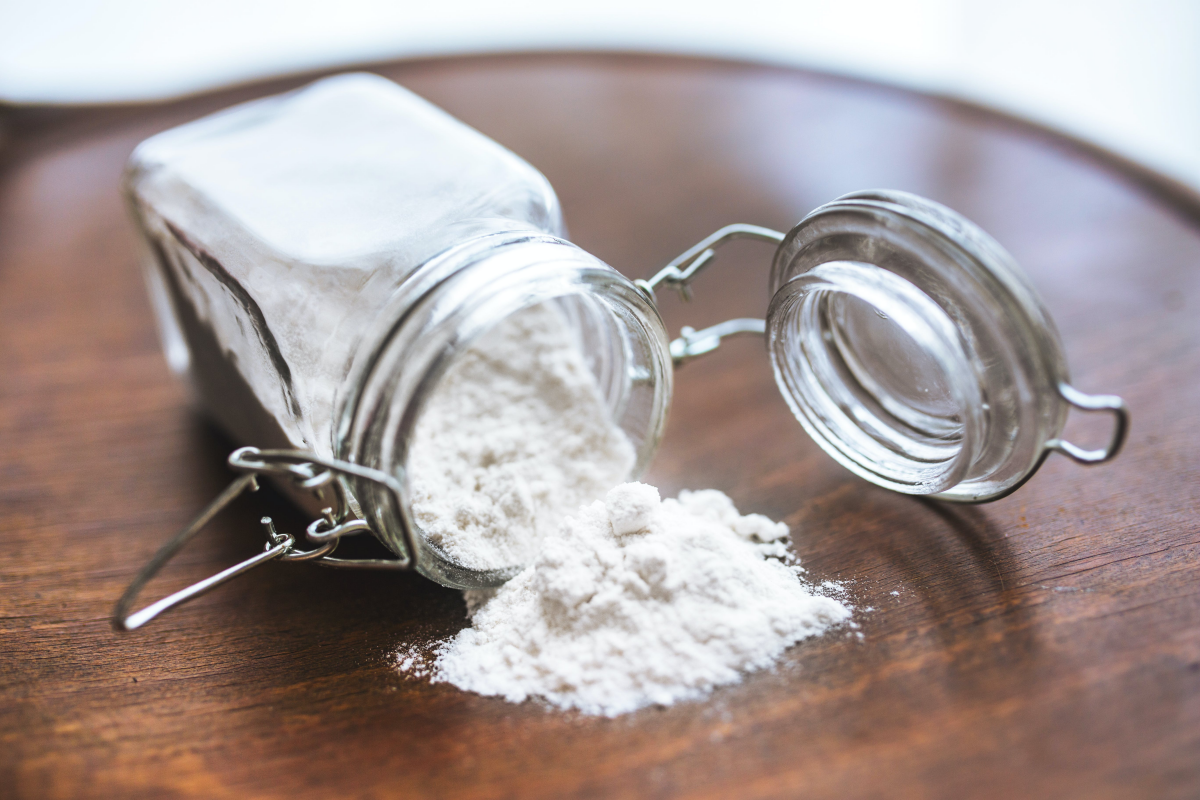
Plaster of Paris
This Plaster of Paris paint recipe is a game-changer for those looking to revamp heavy-use furniture with durable, long-lasting finishes. Ideal for pieces that endure daily wear and tear, this recipe promises resilience and a flawless matte aesthetic.
Ingredients:
- 1 part Plaster of Paris
- 1 part Water
- 2 parts Latex Paint
Method:
- Achieve a lump-free mixture by blending Plaster of Paris with water.
- Incorporate the latex paint, mixing well to combine.
- Apply to the furniture, enjoying the robust finish that minimizes the need for a topcoat.
Ideal for pieces that endure daily wear and tear

Unsanded grout
This recipe excels in transforming decorative pieces by adding thickness and texture, masterfully concealing any imperfections. It’s the perfect choice for bringing new life to items requiring a robust, tactile finish that enhances their visual appeal.
Ingredients:
- 1 part Unsanded Grout
- 1 part Water
- 2 parts Latex Paint
Method:
- Combine unsanded grout with water, stirring to a smooth consistency.
- Gradually mix in the latex paint until thoroughly combined.
- Use the mixture to paint, appreciating the thick coverage it provides.
This recipe excels in transforming decorative pieces by adding thickness and texture
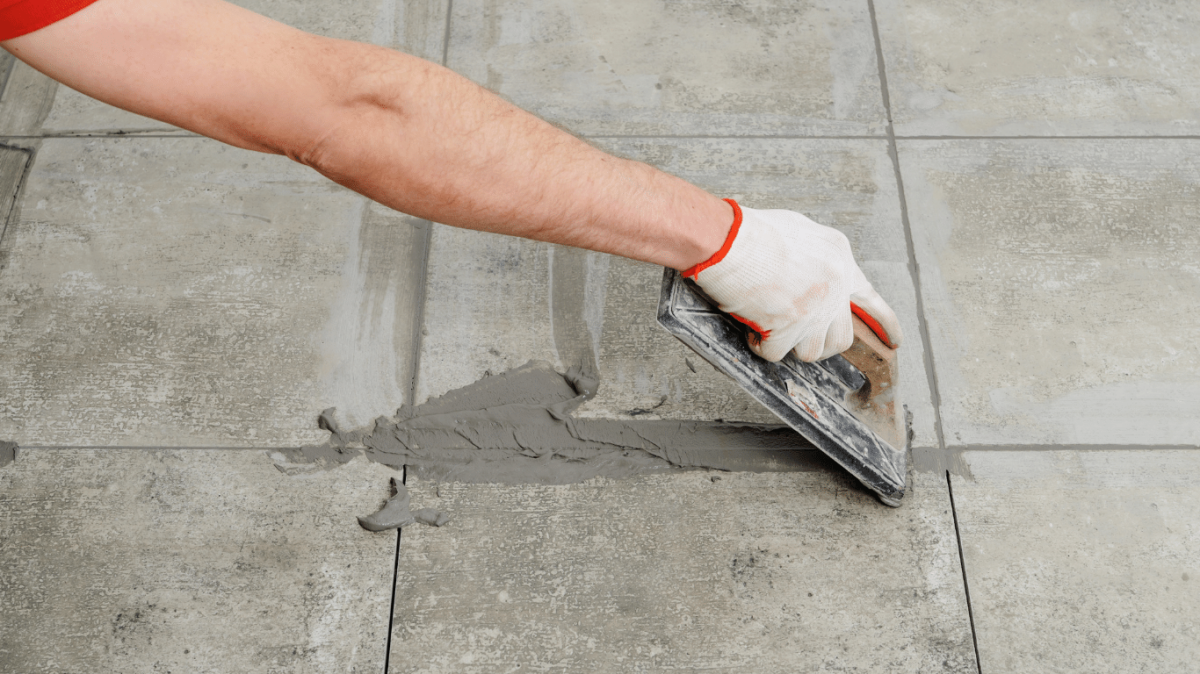
Cornstarch
Cornstarch is easily accessible. This recipe is tailor-made for eco-friendly projects, offering a light, easy-to-manage solution for your painting needs. It’s especially suited for those seeking a sustainable option that doesn’t compromise on quality or ease of application.
Ingredients:
- 1 part Cornstarch
- 1 part Water
- 2 parts Latex Paint
Method:
- Dissolve cornstarch in water, ensuring no clumps remain.
- Stir in the latex paint until you achieve a consistent blend.
- Apply to your project, noting the environmentally friendly and delicate finish it offers.
Cornstarch is super easily accessible

FAQs
Is homemade chalk paint durable?
Homemade chalk paint, particularly when formulated with Plaster of Paris or unsanded grout, boasts impressive durability suitable for a range of furniture projects. The robustness of these ingredients contributes to a hardy finish, capable of withstanding daily wear and tear. However, the longevity of homemade chalk paint also hinges on the application technique and the crucial step of sealing the painted piece. A properly applied sealant can significantly enhance the paint’s resistance to scratches and moisture, ensuring that your beautifully transformed furniture remains in pristine condition over time.
The longevity of homemade chalk paint hinges on the application technique

How long will DIY chalk paint last?
The shelf life of DIY chalk paint is surprisingly generous, lasting up to six months when stored correctly. To achieve this longevity, it’s essential to keep the paint in an airtight container, shielded from exposure to air and moisture, which can degrade its quality. Ensuring the container is clean and free from any contaminants also helps preserve the paint’s integrity. This extended usability makes homemade chalk paint not just a cost-effective option but also a convenient one, ready for your next project on a whim.
The shelf life of DIY chalk paint is surprisingly generous
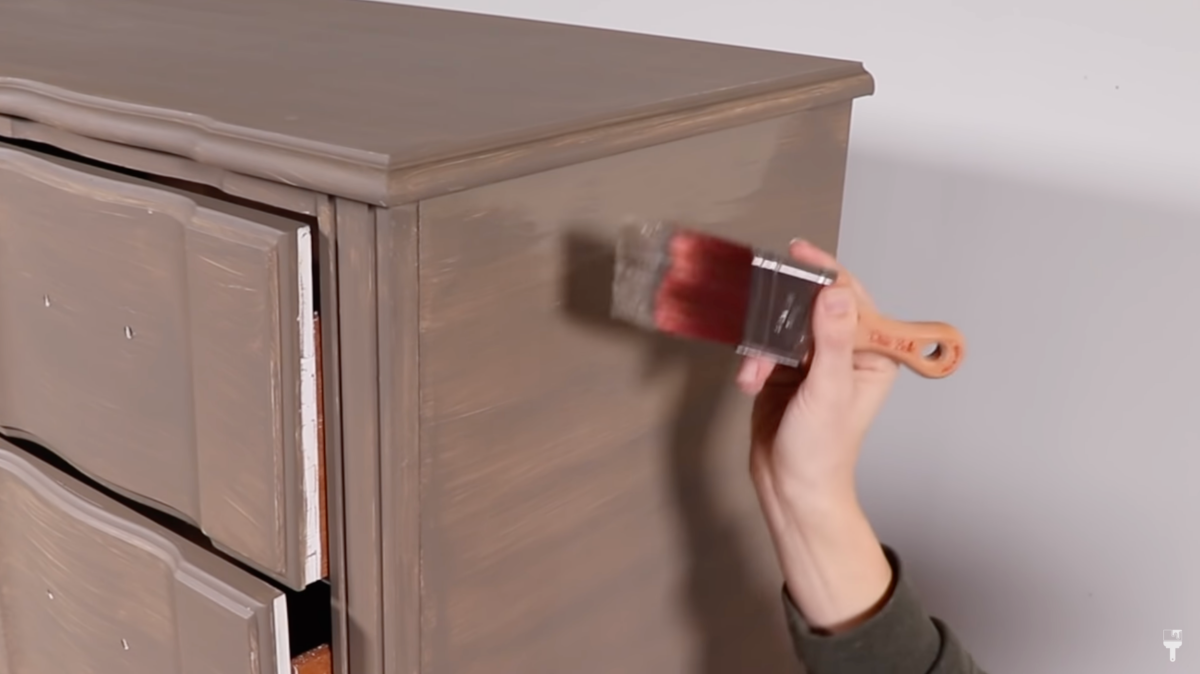
Is it cheaper to make your own chalk paint?
Crafting your own chalk paint is undeniably more economical than purchasing pre-made versions. With just a few simple ingredients, often already on hand or easily accessible, you can mix up a batch of high-quality chalk paint at a fraction of the price. This approach not only saves money but also allows for greater control over the paint’s color and texture, offering a custom solution without the premium price tag. The ability to repurpose leftover latex paint further enhances the cost-effectiveness of the DIY route.
This approach not only saves money but also allows for greater control over the paint’s color

What are the advantages of chalk paint?
Chalk paint is celebrated for its remarkable ease of application, requiring minimal surface prep and adhering beautifully to a wide array of materials. This user-friendly nature eliminates the need for tedious sanding or priming, streamlining the painting process. Beyond its practical appeal, chalk paint imparts a distinctive matte finish that adds depth and character to furniture, invoking a chic, vintage aesthetic. Its thick consistency also allows for exceptional coverage, often achieving a full, even coat with just one or two applications.
Chalk paint is celebrated for its remarkable ease of application
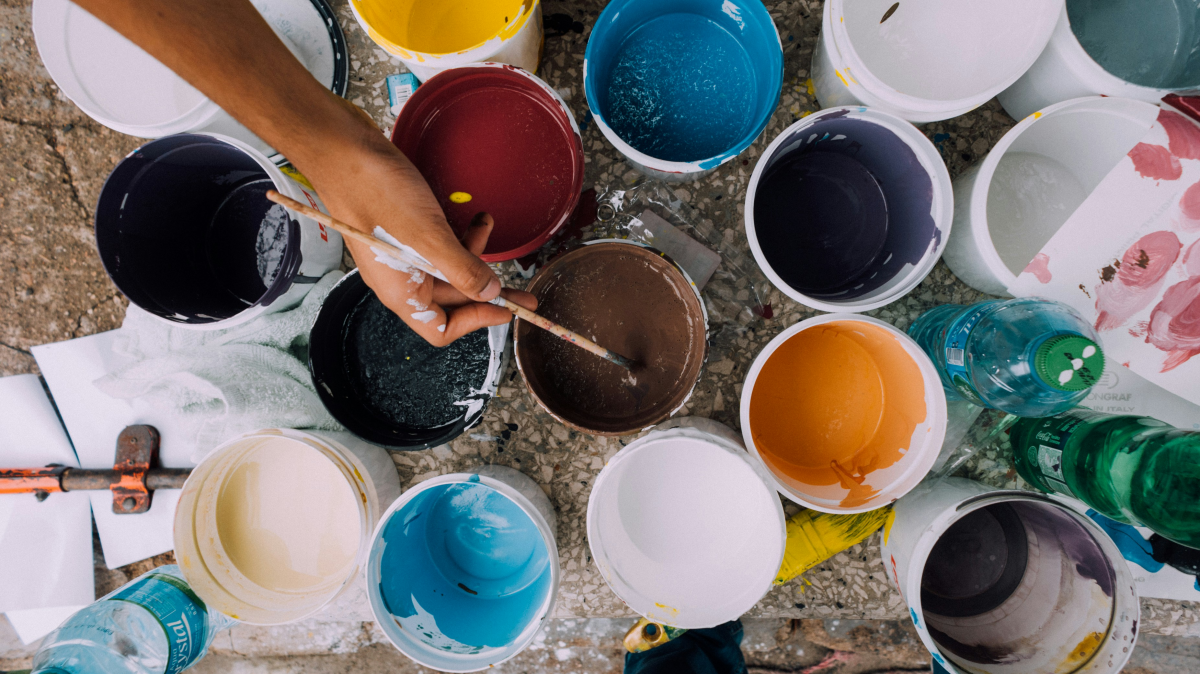
What are the disadvantages of chalk paint?
Despite its many benefits, homemade chalk paint does come with a few considerations. The necessity for a wax or sealant to protect the painted surface adds an additional step to your project, requiring extra time and effort. Furthermore, achieving the perfect consistency and coverage might necessitate some experimentation with DIY recipes, as variations in ingredients can affect the final outcome. These minor drawbacks, however, are often outweighed by the paint’s versatility and the satisfaction of creating a customized finish tailored to your specific project needs.
Homemade chalk paint does come with a few considerations

Embarking on a DIY chalk paint adventure not only enhances your creative repertoire but also transforms how you view furniture restoration and interior decoration. Each recipe offers something unique, from the durability of Plaster of Paris to the eco-friendly appeal of cornstarch. By experimenting with these formulas, you’ll soon discover the perfect blend for your projects.
Each recipe offers something unique

